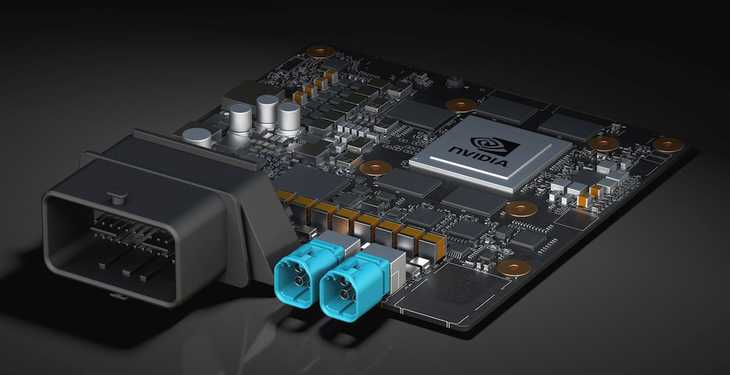NVIDIA was mostly involved into big projects behind the scenes. It’s first foray into the tech world was as a 3D-graphics company, primarily designing the graphics used in video-gaming. But that eventually led to a surprisingly natural partnership with automakers, with NVIDIA setting up virtual wind tunnels or crash tests to help advance the design and engineering of cars, according to Business Insider.
“It even looks a little bit like a video game, but it’s using real data so we can help automakers create safer vehicles by letting them very quickly design and test,” Danny Shapiro, NVIDIA’s senior director of automotive, told Business Insider of the virtual tests.
Over time, NVIDIA has progressively worked itself into vehicles you use or hear about everyday — like Tesla, which uses NVIDIA for the graphics on its giant 17-inch touchscreen. Shapiro said there are 10 million cars crossing 20 different brands on the road today using some form of NVIDIA tech inside.
But perhaps more importantly, NVIDIA is designing the brain running self-driving cars, like ones built by Audi, Ford, Mercedes-Benz, and Volvo. In total, there are more than 80 automakers, startups, and research institutes relying on NVIDIA’s brain to power their self-driving cars, Shapiro said.
“The ability for our systems to now be able to sense what’s going on around car, to interpret it, to understand it, and take action in a 30th of a second is what is enabling autonomous vehicles on the road today,” Shapiro said.
The brain running these cars is NVIDIA’s Drive PX 2 — an artificial-intelligence computer that helps cars locate themselves and avoid obstacles. As Shapiro puts it, the Drive PX 2 gives cars the ability to “see,” so to speak.
NVIDIA is bound to become a bigger player in the space as more car companies and tech giants rely on its AI.
And NVIDIA’s access to a massive pool of data is key. It recently announced a partnership with Baidu, often referred to as the Google of China, to create a cloud-to-car, self-driving system. That’s a big deal, because it can aggregate the data collected by all the autonomous car fleets who choose to use the system.
